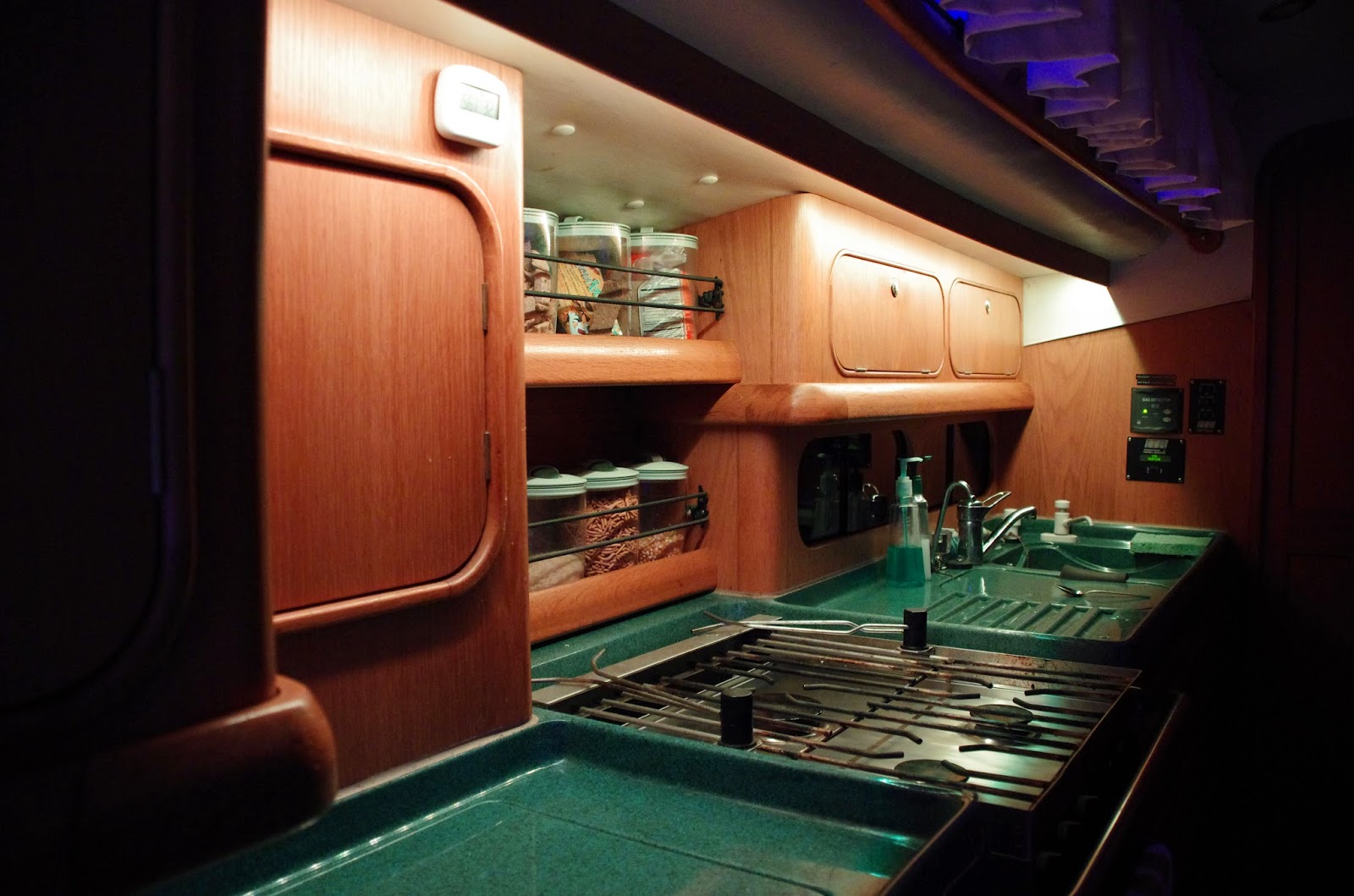It’s difficult to know how long the problem had existed, but it started dropping hints several days before making
itself fully known. The first clue was finding water in the main bilge in the
salon. A couple of weeks later, David grabbed a t-shirt from his wardrobe and
discovered the pile was saturated.
It had
rained heavily the day before and the propane locker, which is accessed through
the deck but takes up part of the closet, had leaked. He checked the locker and discovered the
drain was clogged and there was standing water inside; so he cleared it,
assuming the water had seeped through the connection between the hose and the
thru-hull fitting (which runs through his wardrobe before exiting the
boat). But for some reason, we didn’t
think to re-check the bilge. If we had, we would have known then that our
problems were much bigger than a pile of wet shirts.
The next
day, he went back into the propane locker to refill the tank we were using and
discovered more than he’d bargained for – wet rot!
Here’s how David fixed the problem:
Photo 1: What David saw after removing the propane
tank.
Photo 2: A close up of the wet rot.
Photo 3: The entire base is rotten and has to be
removed.
Photo
1: David begins cutting the base out of
the propane locker.
Photo
2: The base is removed and all that's
left is the drooping headliner, leaving a large hole in the boat.
Photo
3: David glues in false work to hold
the new base in position while he glues it.
Meanwhile, we can see daylight inside his wardrobe.
Photo 1: Attempting to dry out the locker after it
had rained.
Photo 2: Resin and fibreglass cloth on the first base
board.
Photo 3: To avoid standing water, David installs a
second base, raising the floor of the locker so that the drain will sit below
floor level. In this photo, the second base has been installed, glued and has
the first layer of fibreglass cloth.
Photo
1: Adding another layer of cloth to the
second base of the locker.
Photo
2: After 4 layers of cloth, the locker
is left cure.
Photo
3: Freshly painted and ready to be
drilled for the drain installation.
And
there you have it: Our newly redesigned propane locker, better and stronger
than ever!
Cost
Analysis:
- ¾ inch red oak plywood* $25
- Epoxy Resin $25
- Resin Hardener $13
- West System Pump Set $11
- Fibreglass Cloth $2
- A Small Tube of 4200 $14
- Labour (25 hours) $0
Total
Cost $90
Total
Savings** $1410 – $1910
*After using the red oak, David
learned from a fellow dockmate who works in the boating industry that white
oak, which is more dense and durable, would have been a better choice. But because he purchased a hardwood ply and
used resin, epoxy, glue powder and fibreglass cloth to encapsulate it, it’s a
non-issue.
**Even thought it took David
approximately 25 hours to complete the job, a professional could have done it
in 10 to 15. At an average rate of $90
an hour, that’s $900 to $1350 for labour alone.
The consensus at the marina, however, is that the total job would have
cost anywhere from $1500 to $2000 to have it done professionally.



















































